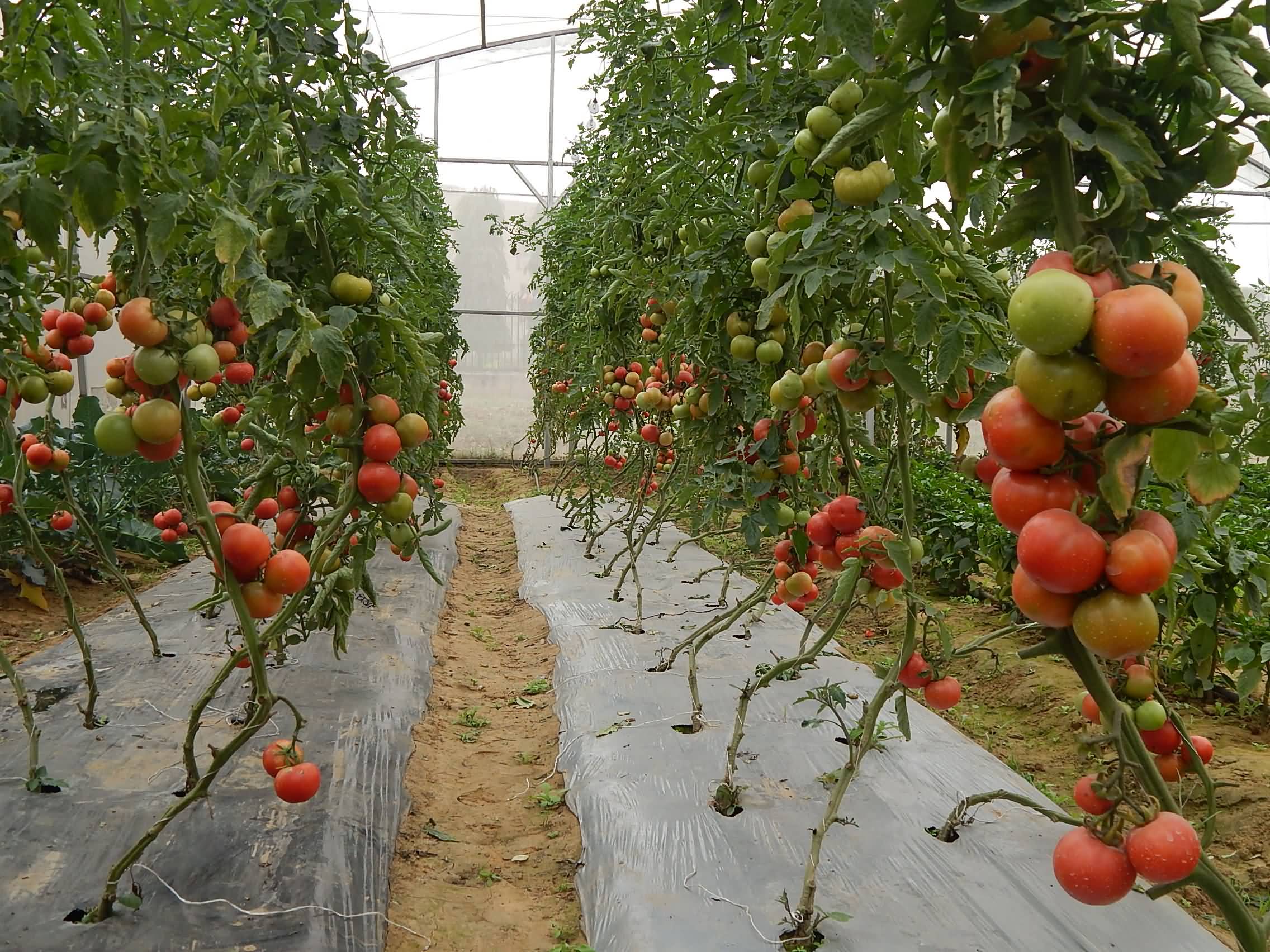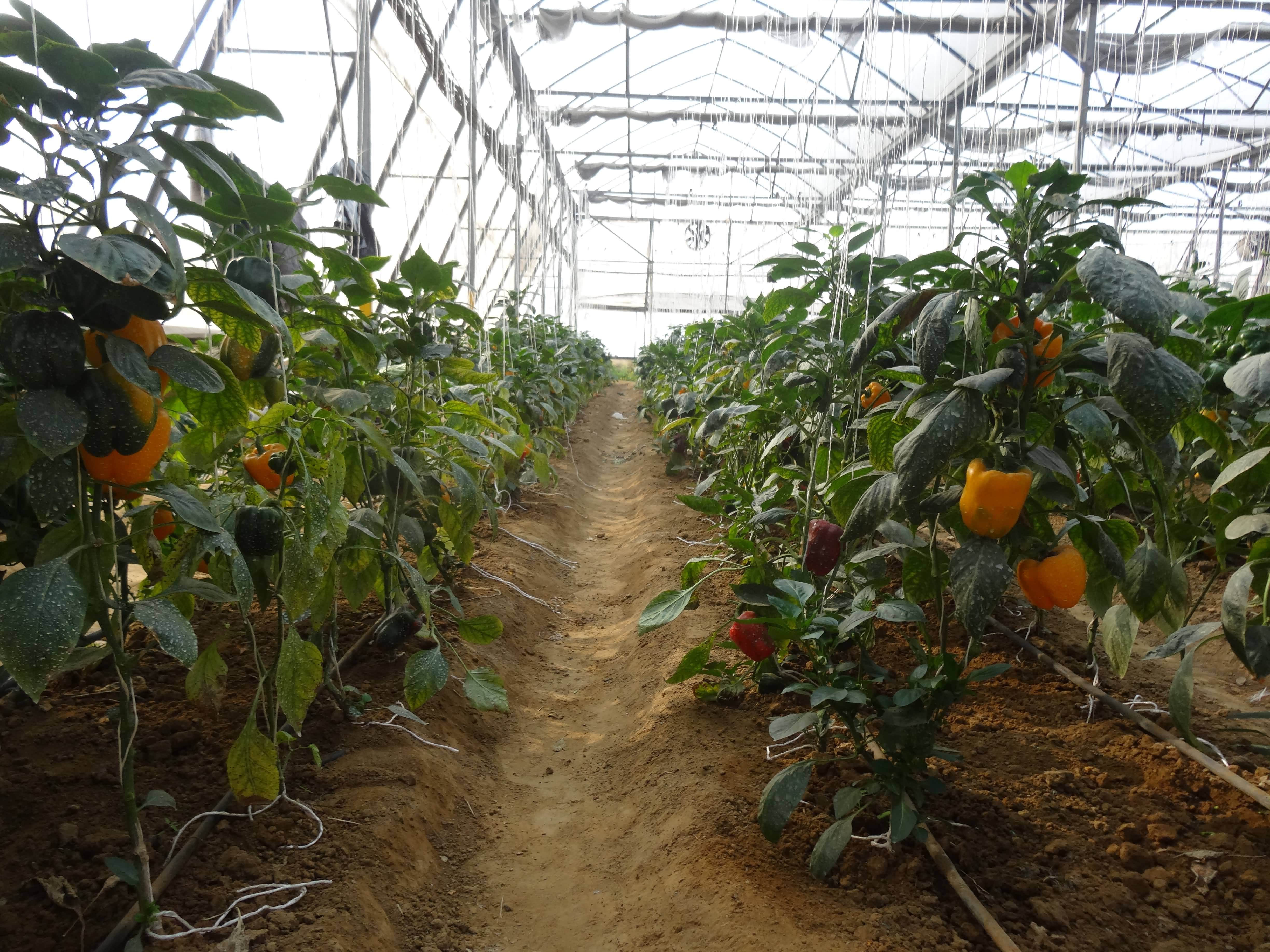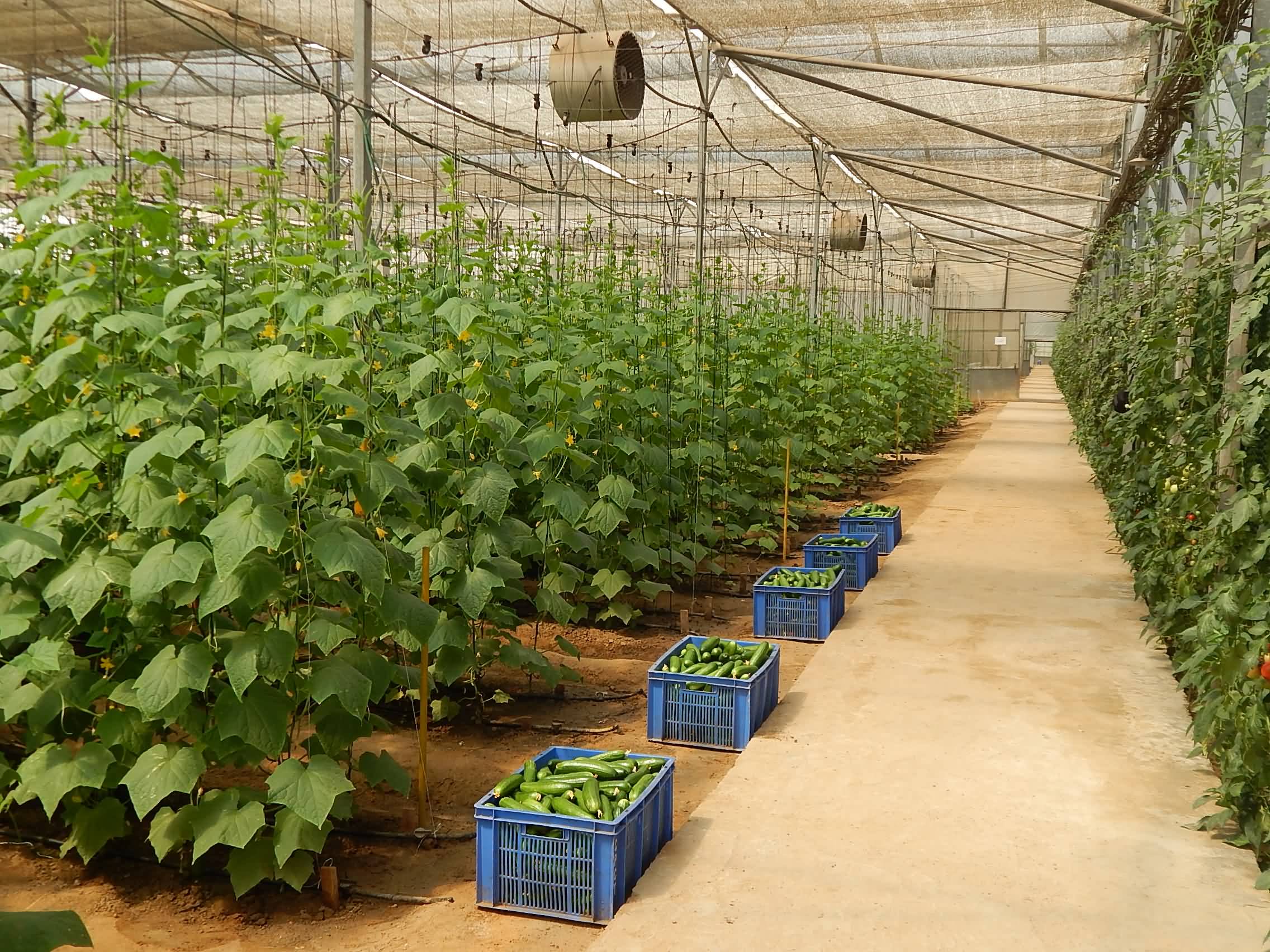संरक्षित खेती के तहत हाईटेक सब्जी उत्पादन
Protected cultivation is the finest alternative and drudgery-free strategy for managing land and other resources more efficiently in the current context of everlasting need for vegetables and significantly shrinking land holdings.
The natural environment is changed to optimal circumstances for optimum plant growth in a protected environment (greenhouse, glasshouse, or polyhouse), resulting in high-quality veggies. Greenhouses are often coated with plastic film that allows solar radiation to flow through while trapping the thermal radiation emitted by the plants inside.
The CO2 generated by the plants at night is kept inside, increasing photosynthesis rates throughout the day. The humidity inside is also raised by evaporation from the soil and plants. Ultra-mode devices are also utilised to control the internal environment.
Vegetable growing in a protected environment is a beautiful art form. The structure of the greenhouse in India is determined by the economic situation of the growers/fanners. As a result, there are three types of greenhouses produced in India.
Low-cost greenhouse / poly house
The low-cost polyhouse is a zero-energy chamber made of 700 gauge polythene sheet and bamboos with 'sutli' and 'nails'. Its size is determined by the purpose of its use and the available space. It has one aperture, similar to the greenhouse, that is left open for 1-2 hours during the day, especially in the mornings, to minimise the humidity within.
The energy source for the construction is the sun. The temperature inside the polyhouse rises 6-10 degrees Celsius higher than outside. The day temperature is greater and the night temperature is lower in a UV-stabilized plastic film covered, pipe framed polyhouse than outside. The solar radiation that enters the polyhouse is 30-40% less than that which reaches the soil surface outside.
Medium-cost greenhouse / polyhouse
A Quonset-shaped polyhouse (greenhouse) can be framed with GI pipe (class B) with 15 mm bore for a slightly higher cost. A single layer of UV-stabilized polythene of 800 gauge covers this polyhouse. The ventilation is provided by thermostatically regulated exhaust fans. The air entering the polyhouse is humidified using a cooling pad. The polyhouse frame and glazing material have a 20-year and 2-year life expectancy, respectively.
Hi-tech greenhouse / polyhouse
A sensor, a comparator, and an operator makes up this type of greenhouse. Temperature, humidity, and light are all controlled automatically. Sensors or signal-receivers are used to indicate these. The sensor measures the variables, compares them to a standard value, and then recommends that the device be run.
A temperature control system, for example, has a temperature sensor, a heating/cooling mechanism, and a thermostat-controlled fan. Similarly, optical tagging devices are used to detect relative humidity. The pressure sensor system controls the operation of the boiler, irrigation, and misting systems.
This modern building is quite costly, since it necessitates qualified operators, as well as maintenance, care, and precautions.
Low- and medium-cost greenhouses have a lot of potential when it comes to producing high-quality crops for local markets. Vegetables and vegetable seed are grown in a protected environment.
Vegetable forcing
During winters in north Indian plains and hills, the temperature and solar radiations are sub-optimal for growing off-season vegetables Like tomato, capsicum, brinjal, cucurbits, okra, cowpea, amaranth and chilli.
Low temperature and radiation produce puffiness and blotchy ripening in tomatoes. As a result, these vegetables can be well-cultivated under polyhouse during the harsh winter months (October-February). Tomato and capsicum yields in a medium-cost greenhouse are 98.6-110.5 tonnes/ ha and 87.2 tonnes/ ha, respectively.
Protected environments could be useful in home gardens at somewhat higher elevations where the winter is longer. For growing chilli, tomato, brinjal, summer squash, and okra in pots and other containers, a small-sized polyhouse can be built over uncultivable land-on scape, even roof / terrace receiving sunlight.
The most essential crops for production around metropolis and big cities during the winter season or off-season are high-priced vegetables such as asparagus, leek, tomato, cucumber, and capsicum.
 Fig 1. Protected cultivation of tomato
Fig 1. Protected cultivation of tomato
 Fig 2. Protected cultivation of capsicum
Fig 2. Protected cultivation of capsicum
 Fig 2. Protected cultivation of cucumber
Fig 2. Protected cultivation of cucumber
Raising off-season nurseries
Cucurbits are a warm-weather crop. When the night temperature is approximately 18-20°C, they are sown in the last week of February or the first week of March. In a polyhouse, however, their seedlings can be raised in polythene bags shielded from chilly winds and frost between December and January.
By planting these seedlings at the end of January or the beginning of February, their yield might be harvested one and a half months earlier than with traditional direct sowing. Due to the selling of food during the off-season, this technology fetches a higher price.
Similarly, seedlings of tomato, chilli, capsicum, and brinjal can be cultivated under plastic cover in lowlands as well as temperate regions of the country, protecting them from frost and severe cold. The climatic conditions, particularly the rise in temperature within the polyhouse, may have accelerated the germination and early growth of warm-season vegetable seedlings for early-season crop production in the spring and summer.
 Fig 4. Off season nursery production under polyhouse
Fig 4. Off season nursery production under polyhouse
Polyhouse for plant propagation
Low temperatures affect asparagus, sweet potato, pointed gourd, and ivy gourd. These vegetables' propagating materials can be well-maintained under a polyhouse in the winter before sowing cuttings in the early spring-summer season for a higher profit.
Basic requirements
Seed selection: It is crucial to have higher-quality seed with genetic characteristics that are compatible with the environment in which it is developed. Vegetable seed must be true to name, viable, disease- and pest-free, and devoid of weeds, dirt, and other extraneous materials to be considered good.
Cultivar selection: Cultivars that thrive in open fields are usually good candidates for polyhouse cultivation. Rapid-maturing cultivars and high-yielding hybrids, on the other hand, are ideal. Cultivars and hybrids are chosen based on the type of plant and its development habits. Indeterminate tomato cultivars and hybrids should be used. Rather than being a bush, the plants are grown erect as a single stem. Cucumber cultivars should be distinctive. They should only flower females and produce bitter-free dark green parthenocarpic (seedless) fruits.
Vegetable seed production
Vegetable seed production is a limiting factor for vegetable agriculture in India. For flowering and fruit set, the vegetables require precise temperature and other environmental conditions. Some vegetables are grown in one region of the country, yet their seed is only produced in another.
A protected habitat is required to reduce such microclimatic conditions. For flowering, fruit setting and growth, as well as seed creation, summer squash requires a moderate temperature. As a result, its seed production is limited to the mountainous regions of north India during the summer season. However, under a low- and medium-cost greenhouse, seed production of summer squash 'Australian Green' and 'Pusa Alankar' is now also possible in the north Indian plains.
Seed production for highly profitable crops such as tomato, capsicum, and cucumber is also done in a protected environment. In cross-pollinated vegetables such as onion, cauliflower, and cabbage, maintaining purity of distinct varieties/lines can be maintained by growing them in a greenhouse without providing isolation distance.
Bee hives are maintained indoors during blooming in onion, summer squash, cucumber, and bitter gourd to ensure adequate pollination and fruit set. As a result, low- and medium-cost greenhouse vegetable farming is a technical reality in India.
This type of production technique has not only prolonged the growing season and availability of vegetables, but it has also fostered the conservation of many rare crops. Vegetable seed production in a protected environment is also an important step in increasing vegetable production in India.
Authors
Raman Selvakumar, Praveen Kumar Singh, Jugendra Kumar
ICAR-Indian Agricultural Research Institute, Pusa Campus, New Delhi-110012, India
Corresponding mail:
